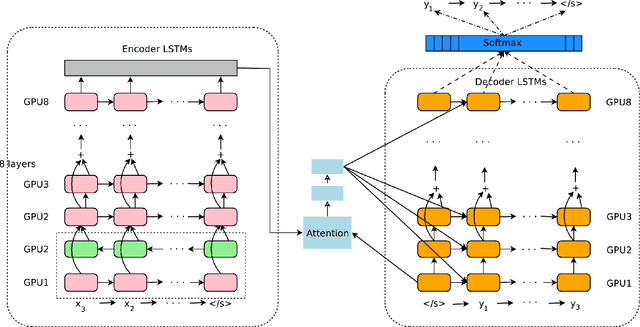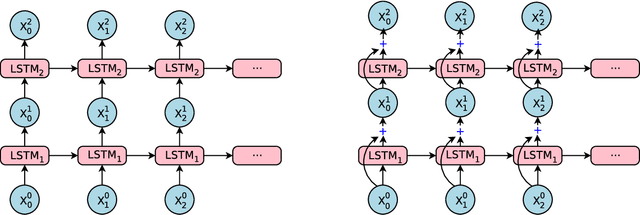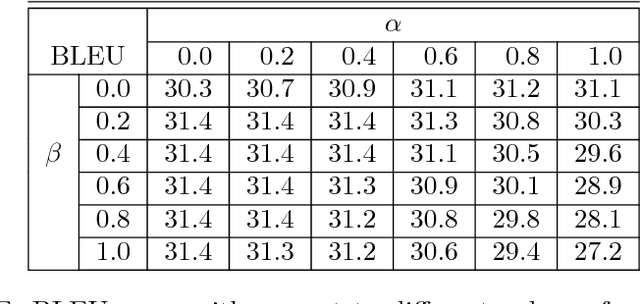Qin Gao
Generating Gender Alternatives in Machine Translation
Jul 29, 2024



Abstract:Machine translation (MT) systems often translate terms with ambiguous gender (e.g., English term "the nurse") into the gendered form that is most prevalent in the systems' training data (e.g., "enfermera", the Spanish term for a female nurse). This often reflects and perpetuates harmful stereotypes present in society. With MT user interfaces in mind that allow for resolving gender ambiguity in a frictionless manner, we study the problem of generating all grammatically correct gendered translation alternatives. We open source train and test datasets for five language pairs and establish benchmarks for this task. Our key technical contribution is a novel semi-supervised solution for generating alternatives that integrates seamlessly with standard MT models and maintains high performance without requiring additional components or increasing inference overhead.
Google's Neural Machine Translation System: Bridging the Gap between Human and Machine Translation
Oct 08, 2016



Abstract:Neural Machine Translation (NMT) is an end-to-end learning approach for automated translation, with the potential to overcome many of the weaknesses of conventional phrase-based translation systems. Unfortunately, NMT systems are known to be computationally expensive both in training and in translation inference. Also, most NMT systems have difficulty with rare words. These issues have hindered NMT's use in practical deployments and services, where both accuracy and speed are essential. In this work, we present GNMT, Google's Neural Machine Translation system, which attempts to address many of these issues. Our model consists of a deep LSTM network with 8 encoder and 8 decoder layers using attention and residual connections. To improve parallelism and therefore decrease training time, our attention mechanism connects the bottom layer of the decoder to the top layer of the encoder. To accelerate the final translation speed, we employ low-precision arithmetic during inference computations. To improve handling of rare words, we divide words into a limited set of common sub-word units ("wordpieces") for both input and output. This method provides a good balance between the flexibility of "character"-delimited models and the efficiency of "word"-delimited models, naturally handles translation of rare words, and ultimately improves the overall accuracy of the system. Our beam search technique employs a length-normalization procedure and uses a coverage penalty, which encourages generation of an output sentence that is most likely to cover all the words in the source sentence. On the WMT'14 English-to-French and English-to-German benchmarks, GNMT achieves competitive results to state-of-the-art. Using a human side-by-side evaluation on a set of isolated simple sentences, it reduces translation errors by an average of 60% compared to Google's phrase-based production system.
 Add to Chrome
Add to Chrome Add to Firefox
Add to Firefox Add to Edge
Add to Edge